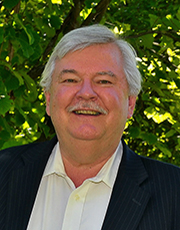
Recent advances in hybrid simulation
Stephen A. Mahin
Professor, Department of Civil and Environmental Engineering
University of California, Berkeley, U.S.A.
Abstract: Hybrid simulation has been used for a variety of important applications to improve understanding of the inelastic dynamic behavior of structures and structural components too large, strong, or dangerous to test by conventional means.This presentation discusses several recent research projects that have taken promising theoretical concepts and implemented them in large-scale test facilities. These implementations include specialized applications of hybrid substructure testing, and deployment of hybrid or “smart" earthquake simulator platforms. To enable these tests, high performance parallel computational resources are used to compute the response of the analytical portions of the hybrid model, as well as to carry out the hybrid analysis and control the overall simulation. All of the components of the simulation process were integrated using OpenFresco.
Stemming from earlier research involving hybrid simulations of complex two- and three-dimensional space frames, recent work has focused on real- and near real-time testing of large-capacity, full-sized seismic isolation bearings supporting large civil engineering facilities, such as tall buildings and nuclear power facilities. In this effort, the 8 degree-of-freedom Seismic Response Modification Device (SRMD) test machine at UC San Diego was modified to carry out tests of isolators supporting structures with more than 60,000 degrees of freedom. Tests are looking at response of isolated systems under extreme ground motions, up to and including the failure of the bearings. While some simulations included only experimental isolators, others include highly complex nonlinear numerical models to represent the 3D response of more than 500 individual bearings. Use of hybrid simulation in tests done with this class of multi-directional testing fixtures will permit more realistic assessment and characterization of the inelastic dynamic behavior of critical components of structures, and provide far greater assurance in the seismic performance of structures that incorporate these components.
Another major effort has been to apply the concept of smart shaking tables to several major earthquake simulator platforms worldwide. The initial development work was done on a log stroke 1D shaking table at Berkeley, where the platform was imagined to be supported by a numerical substructure. This has been successfully used to test structures to simulate soil-structure interaction and mid-level isolation in both low- and high-rise structures. This effort has been extended to the large-scale 6DOF shaking table simulator at UC Berkeley, where the smart table concept is used for similar applications. Current work focuses on the use of inertial mass dampers, where the platform supports various types of inertial mass damping devices, and the table is supported on large finite element models simulating the response of tall buildings having various properties. This same concept has not been implemented on the new four platform earthquake simulator array at Tongji University in China. In addition, the hybrid capabilities have been extended to permit the use of auxiliary actuators connected between different parts of specimens extending multiple shaking tables, and between the specimen and fixed attachment points located on or off of the platforms. This class of smart shaking tables provides researchers with opportunities for many new and promising avenues for research.
Bio: Stephen Mahin has sought through the integration of computational, experimental and theoretical studies to improve earthquake safety and resilience of the built environment. He has helped formulate and lead a number of notable national and international cooperative research efforts, including the SAC Steel Program, various NSF cooperative programs between the US and Japan, and the Pacific Earthquake Engineering Research Center. He holds the Byron and Elvira Nishkian Endowed Chair of Structural Engineering at the University of California, Berkeley.
Back to Speakers